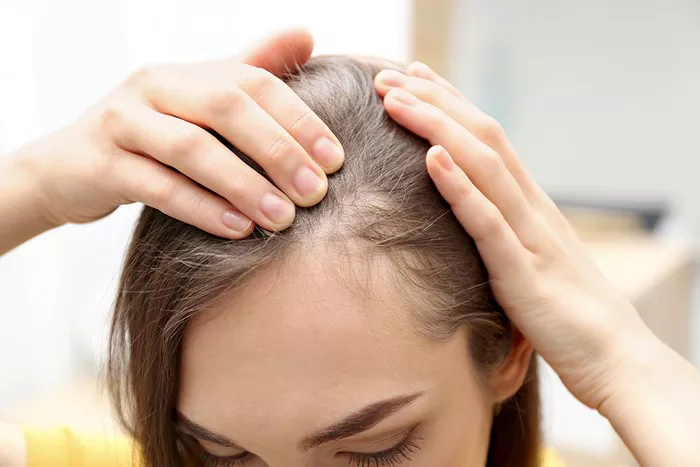In the world of hair loss and hair health, one of the most common concerns is an early receding hairline. Many individuals experience this issue, and it’s essential to understand what it looks like, its causes, and potential treatments. In this comprehensive article, we’ll explore the various aspects of an early receding hairline, providing you with the information you need to address this concern.
1. Recognizing the Signs of an Early Receding Hairline
An early receding hairline can often be identified by the following characteristics:
a. Gradual Hairline Retreat
The most apparent sign is the gradual shift of your hairline. Typically, the hairline starts receding from the temples, creating an “M” shape. This alteration in your hairline’s shape is an early indication of hair loss.
b. Thinning at the Temples
As your hairline recedes, you may notice thinning at the temples. The hair in this area becomes finer and sparser, making your forehead appear more prominent.
c. Increased Scalp Visibility
Another sign is an increased visibility of your scalp through the hair. When your hairline recedes, the scalp beneath becomes more exposed.
d. Widening Forehead
The forehead may appear larger as your hairline recedes. This change in proportion can be a telling sign of an early receding hairline.
2. Common Causes of an Early Receding Hairline
Several factors contribute to an early receding hairline. Understanding these causes can help you make informed decisions about potential treatments. Some key contributors include:
a. Genetics
Heredity plays a significant role in hair loss, including receding hairlines. If your family has a history of early hair loss, you may be genetically predisposed to it.
b. Hormonal Imbalance
Hormonal changes, such as an excess of dihydrotestosterone (DHT), can lead to hair loss. This hormone can cause hair follicles to shrink, leading to a receding hairline.
c. Age
As we age, it’s natural for our hair to thin and recede. However, some individuals experience this process at a younger age, leading to an early receding hairline.
d. Poor Hair Care Habits
Frequent use of harsh hair products, excessive heat styling, and improper hair care can damage hair follicles and accelerate hair loss, including a receding hairline.
e. Stress
Chronic stress can trigger hair loss by disrupting the hair growth cycle. Reducing stress levels through relaxation techniques or meditation may help slow the progression of a receding hairline.
3. Diagnosing an Early Receding Hairline
If you suspect you have an early receding hairline, it’s essential to seek professional guidance. A dermatologist or hair specialist can diagnose your condition through various methods, including:
a. Hair Examination
A close examination of your hair and scalp can provide valuable insights into the extent of your hair loss.
b. Scalp Biopsy
In some cases, a scalp biopsy may be conducted to determine the underlying causes of hair loss.
c. Blood Tests
Blood tests can help identify hormonal imbalances or deficiencies that may contribute to your receding hairline.
4. Treatment Options for an Early Receding Hairline
Dealing with an early receding hairline is a concern for many, but there are several treatment options available to help slow or reverse the process. Here are some common approaches:
a. Medications
Prescription medications like minoxidil and finasteride can help promote hair growth and slow down the progression of a receding hairline.
b. Platelet-Rich Plasma (PRP) Therapy
PRP therapy involves injecting your own platelet-rich plasma into the scalp to stimulate hair growth.
c. Hair Transplants
Surgical procedures like hair transplantation can provide long-lasting results by moving hair follicles from one area of your scalp to the receding hairline.
d. Low-Level Laser Therapy
Low-level laser therapy devices are available for home use, and they can stimulate hair follicles and promote regrowth.
e. Lifestyle Changes
Maintaining a healthy lifestyle, including a balanced diet, regular exercise, and stress management, can significantly contribute to hair health.
5. Prevention Strategies
Preventing an early receding hairline is often more effective than treating it. Here are some preventive measures to consider:
a. Gentle Hair Care
Avoid harsh hair treatments and limit the use of hot styling tools to protect your hair from damage.
b. Balanced Diet
Eating a diet rich in essential nutrients like vitamins, minerals, and proteins can support hair health.
c. Avoiding Smoking and Excessive Alcohol
Both smoking and excessive alcohol consumption can contribute to hair loss. Quitting these habits can benefit your overall health and hair.
6. Embracing Your New Look
While addressing an early receding hairline is essential for many, it’s also important to remember that beauty comes in various forms. Embrace your new look with confidence, and remember that a receding hairline doesn’t define your worth.
See Also: What Age Do Men Stop Losing Hair: What You Need To Know
In conclusion
Recognizing the signs, causes, and treatment options for an early receding hairline is crucial for those facing this common concern. By understanding the underlying factors and available solutions, you can take proactive steps to address and manage your hair loss effectively. Remember that seeking professional advice is the first and most important step in your journey to a healthier, more confident you.


